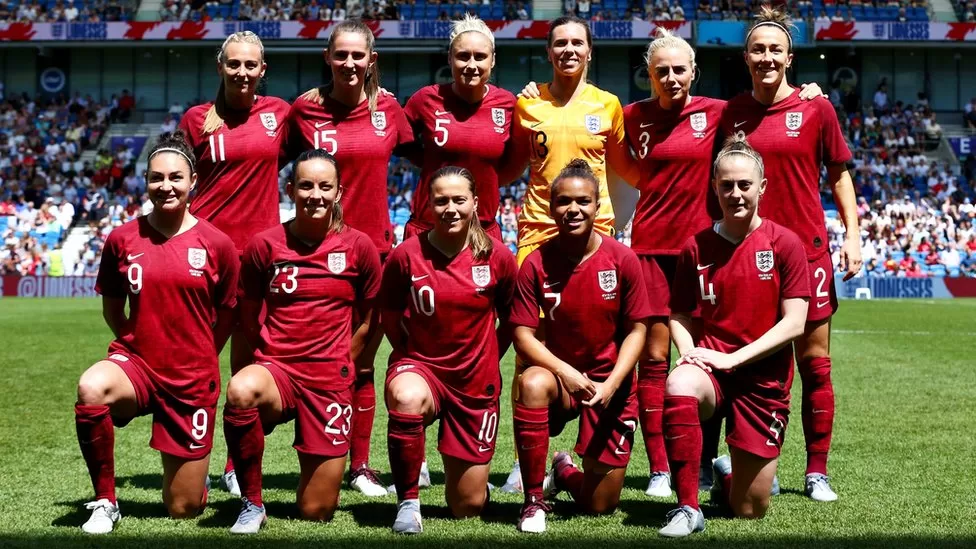Breaking Barriers and Shattering Stereotypes: The Rise of Women’s Football
Women’s football, once considered a niche sport, has experienced a remarkable transformation in recent years. From the challenges and obstacles faced by female athletes to the increasing participation and recognition, this article explores the evolution of women’s football, celebrates its achievements, and looks into the future of the game.
The Evolution of Women’s Football
The roots of women’s football can be traced back to the late 19th century when female players began participating in the sport. However, it was not until the 1960s that the game started gaining traction globally. The establishment of the first women’s national teams and the organization of international tournaments marked crucial turning points in the growth of the sport.

Over time, women’s football has witnessed significant improvements in terms of player skills, tactics, and overall gameplay. The integration of professionalism into the women’s game has led to higher standards and increased competition. Many top-tier clubs around the world now have women’s teams, and the level of investment in women’s football has grown exponentially.
Challenges and Obstacles
Despite its progress, women’s football continues to face various challenges and obstacles. Historically, women’s football has been marginalized and often overshadowed by the men’s game. Negative stereotypes and misconceptions about women’s participation and ability in football have hindered the growth and development of the sport.

Additionally, the lack of resources, funding, and infrastructure has posed significant challenges for women’s football globally. Limited opportunities for training, coaching, and access to facilities have often restricted the potential for young girls and women to participate in the sport.
Trailblazers and Pioneers
Despite the hurdles, numerous brave women have challenged the status quo and paved the way for future generations. Trailblazers like Mia Hamm, Marta, and Abby Wambach have not only achieved remarkable success on the field but also inspired millions of girls worldwide to pursue their dreams in football.
These pioneers have not only showcased their exceptional skills but have used their platforms to advocate for gender equality and empowerment. Their successes and contributions have been instrumental in reshaping the perception of women’s football.
Women’s Football Around the World
Women’s football is now a global phenomenon, with participation and interest expanding across continents. Traditional powerhouses such as the United States, Germany, and Sweden have consistently excelled in women’s football, winning multiple World Cup titles and Olympic medals.
Moreover, emerging nations like Brazil, Australia, and Japan have made significant strides in the women’s game, challenging traditional hierarchies and establishing themselves as competitive forces on the international stage. The increased competitiveness and diversity in women’s football have contributed to the growth of the sport and garnered attention from fans worldwide.
Increasing Participation and Inclusion
Efforts to increase participation and inclusion in women’s football have been on the rise. Various organizations, including FIFA, UEFA, and national football federations, have implemented initiatives to promote women’s football at all levels.
Grassroots programs, development academies, and football clinics have been established to provide young girls with opportunities to play and develop their skills. These initiatives aim to break down barriers and create a more inclusive and diverse football community.
Media Coverage and Public Perception
Media coverage and public perception of women’s football have also undergone significant changes. Historically, women’s matches received minimal coverage and exposure. However, in recent years, broadcasters and media outlets have begun to devote more airtime and resources to women’s football.
Major tournaments like the Women’s World Cup and the UEFA Women’s Champions League have garnered substantial viewership and generated widespread interest. As a result, public perception of women’s football has shifted, and the sport is increasingly being recognized for its excitement, skill, and athleticism.
The Role of Sponsorship and Investment
Sponsorship and investment play a vital role in the development and sustainability of women’s football. As the popularity of the sport continues to grow, corporations and brands are recognizing the value of aligning their name with women’s football.
Increased sponsorship and financial support have allowed women’s football clubs and organizations to invest in player development, infrastructure, and marketing. This injection of resources has helped professionalize the women’s game, making it more attractive to top-level talent and enhancing its overall quality.
Celebrating Achievements and Milestones
In recent years, there have been several significant achievements and milestones in women’s football that deserve celebration. The successful hosting of the Women’s World Cup in France in 2019 showcased the growing popularity and appeal of the tournament. The event generated record-breaking viewership, sparking conversations about gender parity in football.
Notably, the equal pay movement gained traction, with players advocating for equitable wages, treatment, and opportunities. This advocacy has had an impact, as some national teams and clubs have taken steps to close the pay gap between female and male players.
Looking Ahead: The Future of Women’s Football
The future of women’s football looks promising, with increasing investment, participation, and interest in the sport. As more resources and opportunities become available, the level of play is expected to rise, creating more exciting competitions and talented athletes.

Moreover, the ongoing efforts to challenge traditional gender norms and stereotypes will result in a more inclusive and diverse football environment. With continued support from governing bodies, sponsors, and fans, the women’s game will continue to break barriers, shatter stereotypes, and inspire generations to come.
In conclusion, the rise of women’s football has been a testament to the determination, talent, and perseverance of countless female athletes worldwide. Despite facing numerous challenges, women’s football has experienced remarkable growth, increased participation, and transformed public perception. As we continue to celebrate the achievements and milestones, the future looks bright for women’s football, with the potential to further break barriers and shatter stereotypes.






